Policy & Issues
Winter Weather Prep
The Texas Oil and Natural Gas Industry Remains Ready for Winter
Several assessments after Winter Storm Uri confirmed that a lack of coordinated communications among all stakeholders had an enormous impact on the ability to produce and move natural gas. In particular, many oil and natural gas field operations were specifically prohibited from applying for “critical load” designation with ERCOT which would provide important information during an emergency situation and potentially avoid having power cut to the most critical assets. As a result, these operations lost power during load shedding events, or “rolling blackouts”, shutting down producing wells and associated infrastructure.
Improvements in communications have been made among all stakeholders since Winter Storm Uri to better prepare the natural gas supply chain for the winter season in Texas. The oil and natural gas industry worked closely with state regulators to implement Senate Bill 3, which created clarity in the “critical load” designation process, mapping of natural gas facilities that are directly tied to power generation and weatherizing those facilities. Texas’ vast supply of natural gas in storage also plays an important role to help power generators better prepare for emergency weather events. Firm supply, storage and transportation contracts in place ahead of storms should balance any production declines associated with extreme cold weather events.
Texas Establishes First of Its Kind Designation of Natural Gas Facilities for Energy Emergencies
During Winter Storm Uri and even with the loss of natural gas production in some locations during the storm, the ample natural gas storage in the state resulted in only 12% of the total loss in power generation being attributable to fuel constraints, according to a post storm analysis by ERCOT. Clearly, where production of oil and natural gas came to a halt due to the storm and related power impacts, the abundance of natural gas held in storage facilities was able to make up for nearly all of the lost production impacts.
Transportation Distribution Utilities (TDUs) must prioritize all critical assets such as hospitals, nursing homes, and EMS, in addition to those facilities necessary for power generation. Not every natural gas facility is a priority from a power perspective during an emergency. This is why mapping and identifying these facilities is the most crucial part of the process.
Current Critical Designation Process
- Deadlines for submissions are March 1st and September 1st of each year.
- Must use RRC Online System to file your organization’s form with RRC.
- Critical natural gas facilities located in the ERCOT region must also provide the critical customer information to ERCOT and to the utility which it receives electric delivery service from.
- Rule 3.65
Identifying natural gas facilities directly tied to power generation is well underway. The first iteration was adopted on April 29, 2022. However, The Texas Electricity Supply Chain Security and Mapping Committee continues to work and will make updates likely twice a year. There are hundreds of thousands of natural gas facilities in the state and not all of them supply natural gas for power generation. Industry is working with the Public Utility Commission, Railroad Commission and Texas Department of Emergency Management to determine which facilities are directly linked to power generators to ensure those facilities weatherize, are prioritized during load shedding events to maintain consistent and reliable power during an emergency. Updates were made in advance of the RRC weatherization deadline of December 1st and those operatring facilities on the map were notified.
Emergency Operations Plan (EOP)
Natural gas facilities that are included on the electricity supply chain map are required to submit an Emergency Operations Plan (EOP) to the Railroad Commission. The Railroad Commission will review EOPs developed by operators and prepare a Weather Emergency Preparedness Report on weatherization preparedness. This report will be submitted to the Legislature no later than September 30th of each even numbered year. As of fall 2023, the Commission has conducted over 7,000 site-specific inspections of natural gas critical infrastructure. Additional resources are included below:

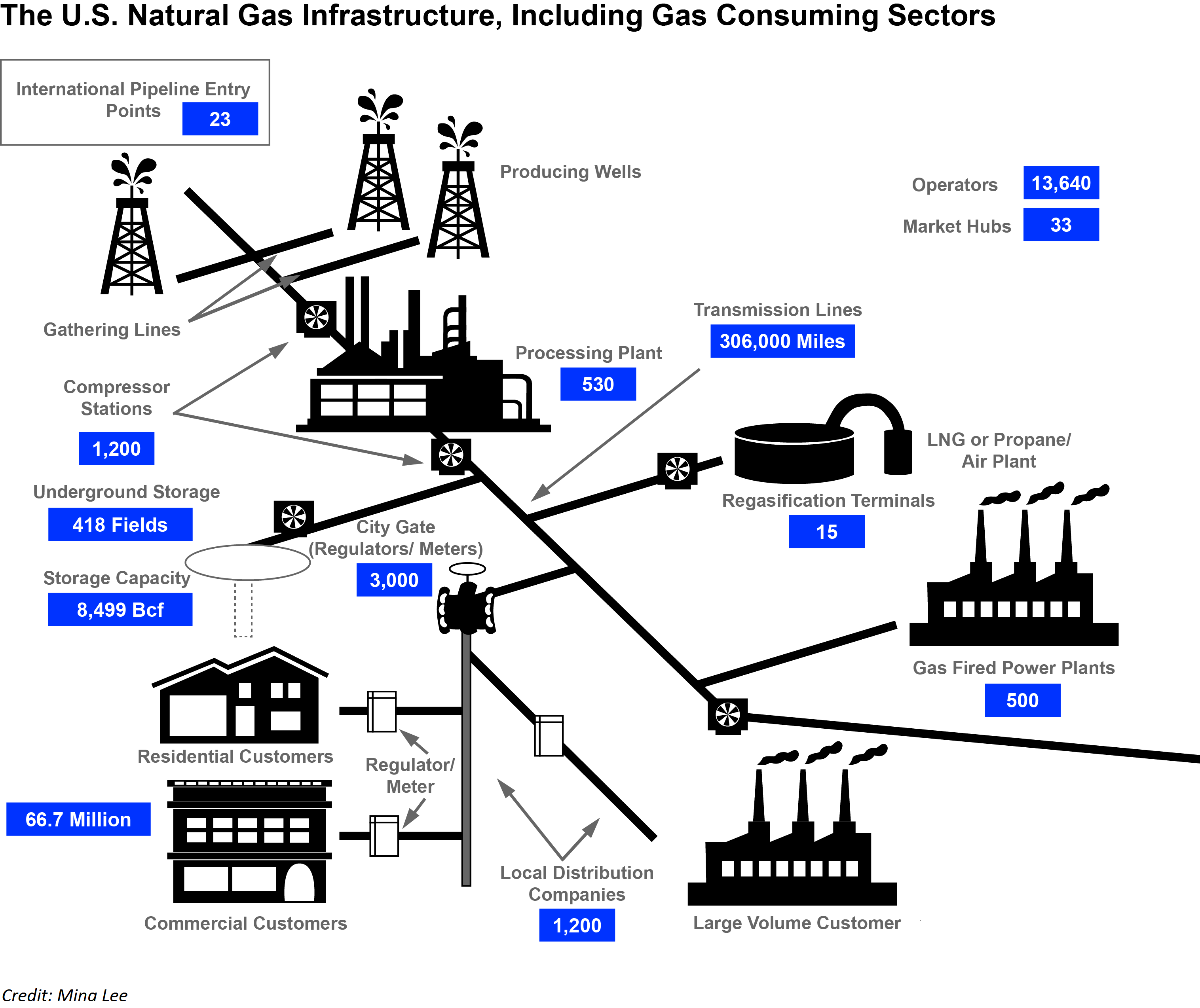
Weatherization
By December 1 of each year, an operator of a facility must implement weather emergency preparation measures intended to ensure sustained operations during a weather emergency and correct weather-related forced stoppages that prevented sustained operation due to previous weather emergencies.
An Operator must submit a Weather Emergency Readiness Attestation by December 1 of each year.
Resources
- RRC Weatherization Practices Guidance Document
- RRC Training Presentation
- Critical Infrastructure Training
- Emergency Reporting Number: 844-773-0305
Prioritizing Power
Loss of Power During Winter Storm Uri Primary Cause of Natural Gas Challenges
Oil and natural gas systems must have power to operate in all weather conditions. Without electricity to power these operations, the wells and production facilities will not operate. No amount of insulation, flow additives or equipment housing will overcome a sustained loss of power. Oil and natural gas facilities regularly operate in a wide range of severe weather conditions, but cannot operate when they don’t have power.
Loss of power was the biggest factor in natural gas production issues during Winter Storm Uri in February. Lack of access to well sites, lost telecommunications, third party disruptions and mechanical issues were also observed, but a lack of electricity to power critical operations was the main issue.
Even with loss of power, fuel limitations accounted for only 12% of the cause of lost electricity production, according to the Electric Reliability Council of Texas’ (ERCOT) independent data.

Case Study of Why Keeping Power on is the Best Winterization Tool
Scenario
Two production fields are located side by side in the Permian Basin, primarily in Texas. One field, labeled as MD, is served by ERCOT (TNMP and Oncor and Priority Power) and the other, titled SL, is served by ERCOT (Oncor via Pumpjack Power). The details discussed will track the production levels from each field and power supply to each field. Note: ERCOT told Oncor to cut power to systems with no residential power. The SL assets fell into the no residential power area. MD is on 2 residential systems. They were not instructed to shut down power on these systems.


Background
As the colder weather began to descend into the region on February 11, production started to decline at both locations which is typically observed at most production sites. Reasons for this production decline include the following: utility power lines freezing, some facility freezing issues, and lower producers struggling as system pressures rise from 3rd party takeaway issues.
In the SL field we began losing power early on February 14. Officially, we were notified of outages on February 14th in the afternoon, and we secured all the backup generators we could find. We lost power 1:00am on February 15th. Production dropped to 14% on February 16th.
In the MD field located in the Oncor grid, much fewer power losses were recorded at these facilities. Production dropped to 67% on February 16th and reasons for the production loss include the following: freezing power lines and excess power demand from towns causing a shortage of power in the field.
This demonstrates that if the power were kept on, production would have been maintained to a reasonable level.
Natural Gas Storage
Natural gas in storage is critical to emergency preparedness.

Texas has 544 billion cubic feet of working natural gas storage. The electric generation sector only consumes about 4 billion cubic feet daily during normal winter conditions. Natural gas storage must be planned for and purchased before a storm to be prepared. Texas needs to focus on how power generators can fairly be compensated for storing natural gas, or purchasing it from storage, as part of readiness plans, while maintaining and encouraging a competitive process that benefits consumers by keeping prices affordable.
Power generators can contract for natural gas delivery and storage, and reports of gas-powered electricity generators that successfully delivered electricity during the storm due to pre-planning for natural gas supply before the storm. Further, direct distribution of natural gas needs were met 99.5% during the duration of the storm. With proper planning, Texas has ample natural gas to meet our energy needs even during extreme circumstances. Power generators should focus on the natural gas that is in storage and can be delivered in a more real-time basis.
It is unrealistic and impractical to overly focus on producing and transporting oil and natural gas from 600 miles away during an emergency when conditions are so bad that students cannot attend school and grocery stores close. Electric power generators need natural gas in storage that is accessible in an emergency situation, and should not rely solely on just-in-time inventory of natural gas to power their generation. This has proven effective in other markets.
Winterization in the Field
Weatherization techniques may include:
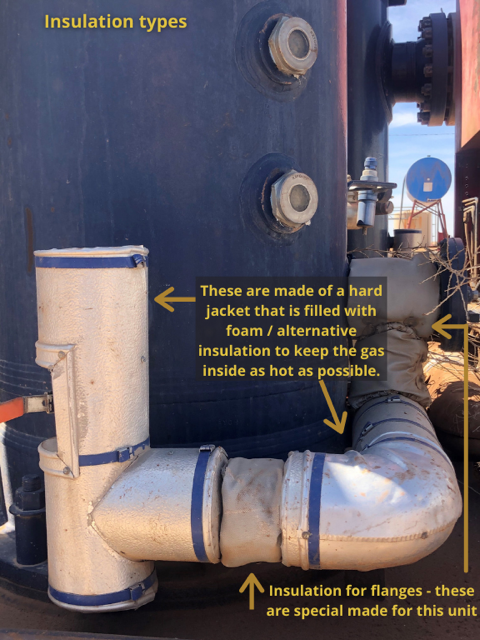
- Critical infrastructure designation
- Methanol injections
- Temperature activated pumps
- Steamer units
- Equipment shelters
- Insulated critical lines and valves
- Insulation blankets
- Heat tracing systems
- Wind walls
- Backup batteries
Conclusions on Weatherization
Oil and natural gas companies produce their product often in rural, remote locations literally at hundreds of thousands of sites and rely on a vast network of third-party providers. Oil, natural gas and water are all produced from the same well. Each of these products are separated and rely on different treatment, processing and delivery systems to be converted to a usable stage and reach their final destination. If any one product suffers a disruption in its processing or moving to its final destination, it generally has the effect of stopping all flows.
Oil and natural gas both have an assortment of purposes for their end-use. Best practices are employed to ensure product flows and these practices change depending on the season. In some instances and with safety being the main focus, it is more prudent to shut in operations. Additionally, volumes of product from fields do vary over time and rapidly at the beginning of a well life which changes the prioritization of the assets in terms of which are deemed most critical in any given year. In upstream production, there are no factory floors or enclosed buildings where conditions are controlled.
The industry is constantly reviewing and improving its systems. As with all mechanical systems, oil and natural gas field production is subject to sudden weather changes but there is a strong commitment to deliver the essential products that fuel our daily lives.
Example 1
The following chart and map shows the standards this company has followed since 2010 with regards to winterization of its midstream and downstream assets, directing supervisors when to begin winterization activities at their facilities based on whether the facilities are located in Zone 1, 2 or 3.
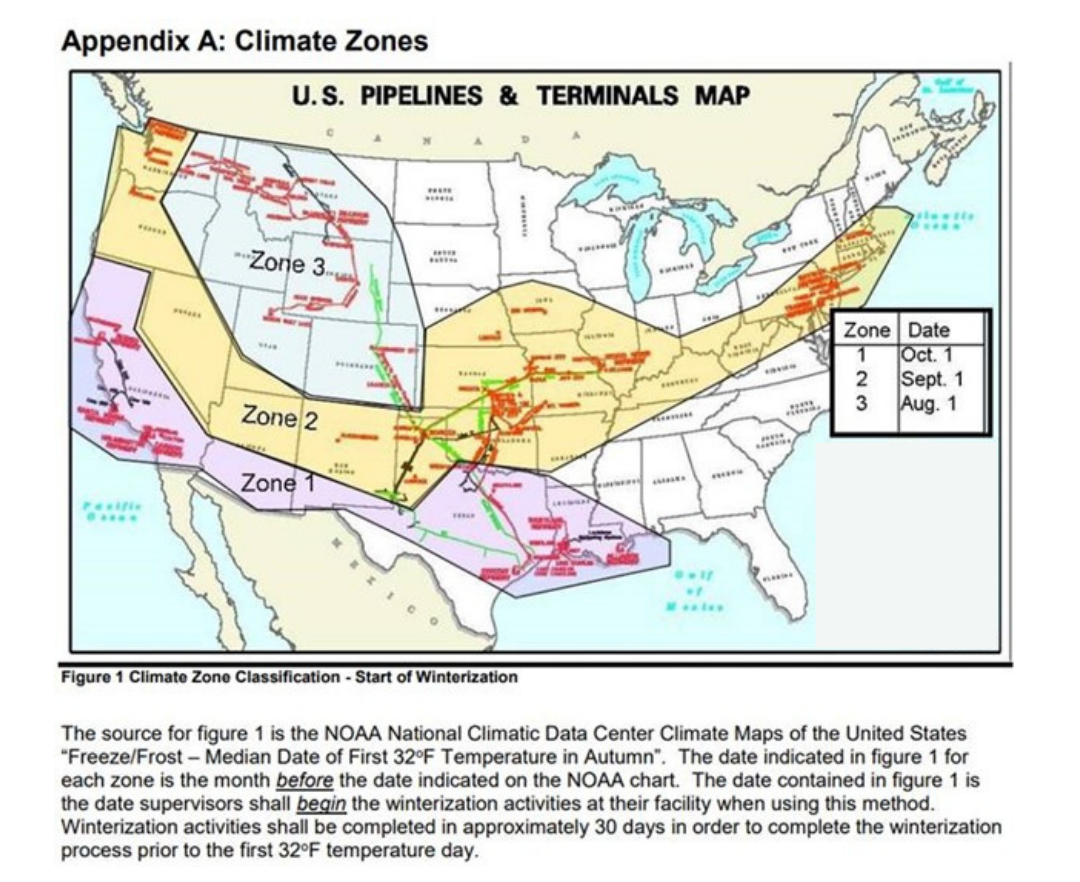

The standard requires local asset supervisors to:
- Identify equipment and assets in their areas which are susceptible to cold weather damage or operational impairment
- Ensure winterization schedules are maintained
- Assign winterization tasks to the appropriate personnel / contractors
Winterization includes the following common tasks:
- Cleaning and lubricating with temperature appropriate grease or oil
- Draining any standing water
- Checking for moisture accumulation in gear boxes and other enclosed components and draining if necessary
- Draining cooling systems and refilling with antifreeze when appropriate
- Installing plugs to drain lines and filling with antifreeze when appropriate
Winterization list for the terminal:
- Insulate all water piping to the buildings
- Verify that heat tracing on all bio diesel piping is in good working condition
- Ensure heaters in all 3 foam buildings are operational
- If the weather forecast shows freezing temps for several days, tarp potable water pump to the admin building
- Installed freeze protection valves on some of the firewater monitors – these ¾” valves open when the temperature drops below 35°F and close when the temperature increases to 40°F
- A few lessons learned from Uri that will be added to the check list this year:
- Need Kerosene heaters on standby to defrost C5+ VCU burner tips
- Insulate and tarp natural gas feed regulators and piping to the terminal
Other Details:
- Each site has specific tasks that must be carried out for that site. The list of tasks are exhaustive for each site, and include photographic guides for each task.
- Water is often the problem, so procedures ensure that all water within systems is removed. Systems are equipped to trap water for removal.
- The appropriate lubricants and antifreeze agents are prescribed for each piece of equipment.
Visual examples of winterization tasks:
Example 2
The following details an upstream operator’s winterization protocols for each season.
Winterization efforts start in October, prior to the onset of winter weather in each operating area, typically in October.
Winterization strategies vary by operating area and individual well site; there is no one-size-fits all solution:
- Considerations include local weather patterns and individual site layout/orientation to minimize freezing
Winterization strategies may include:
- Infra-red imaging to identify temperature drops
- Insulation on high-risk equipment
- Compressor shelters
- Methanol injection at critical points to prevent freezing
- Additional crew shifts at key locations
Other details:
- Environment Health and Safety focus – the safety of our staff and the environment come first
- Utilize a continuous improvement model – every event presents an opportunity to learn and improve
Texas Winterization Efforts:
Winterization Efforts – Onsite Examples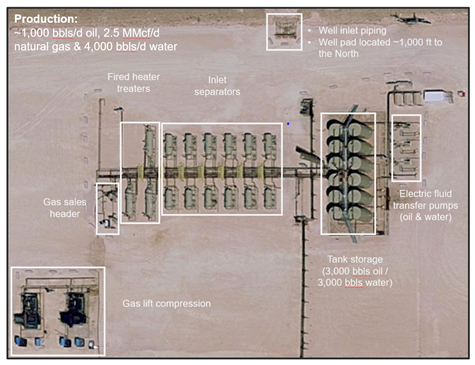
Example 3
The following compressor winterization checklist was created and is used by an upstream operator in the Permian Basin. 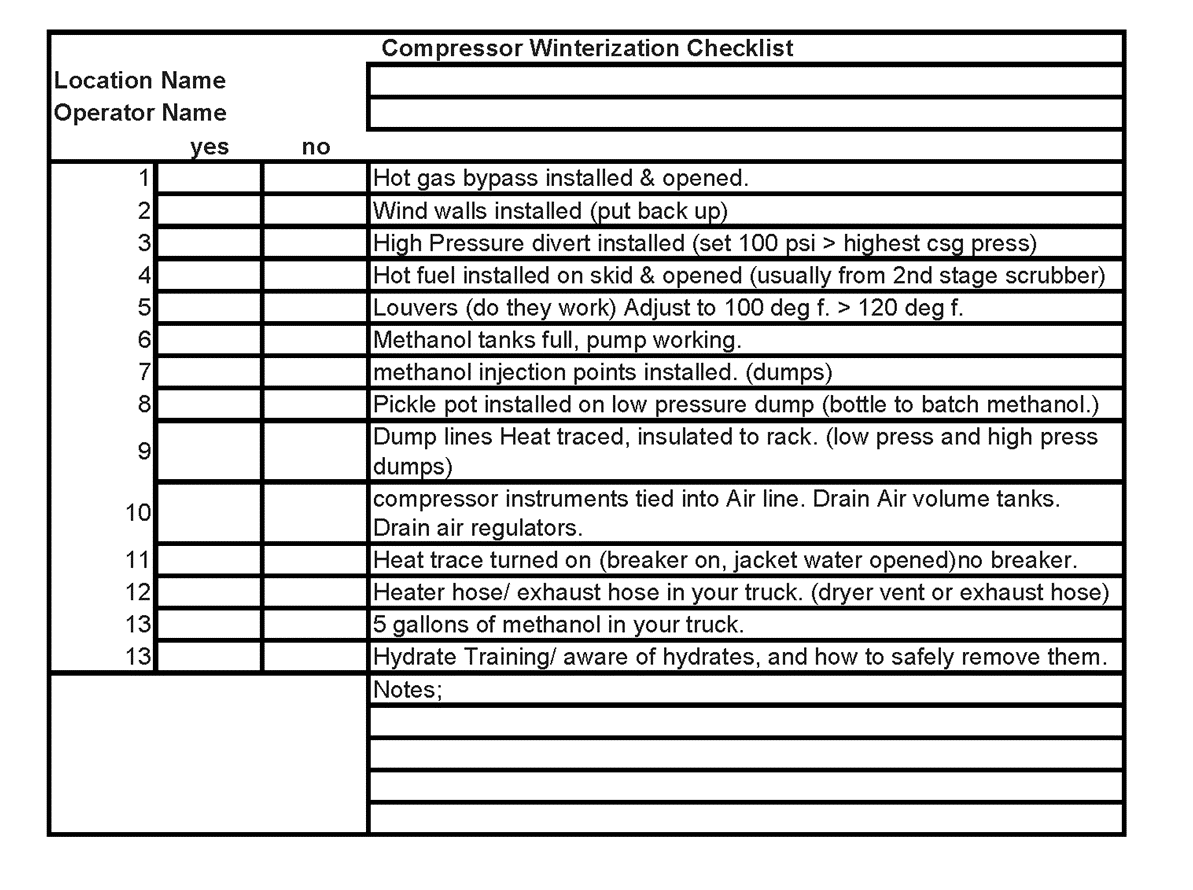
Example 4
The following outlines winterization preparations and business continuity plans undertaken by an upstream operator.
With oil and natural gas exploration and production activities across the United States, [this operator] is no stranger to preparing our operations to run efficiently in cold weather. Each year from South Texas to North Dakota, our skilled teams prepare for freezing temperatures, sleet and snow and continue to deliver our piece of the energy supply chain.
By maintaining detailed business continuity plans we can protect our dedicated workforce and continue critical business functions during unexpected events, including a public health event such as a pandemic or a natural disaster.
Here are a few proactive measures we’ve taken to prepare for freezing temperatures in our Eagle Ford assets in South Texas:
- As part of our extensive digitalization strategy, our operations are monitored remotely and in real time through our SCADA network, which allows our field teams and control center to monitor equipment and well performance. Along with SCADA, we leverage Field Service Management, a powerful digital technology that allows us to prioritize, schedule and dispatch field resources to our sites. We also utilize Smart Alerts to detect operating abnormalities and automatically communicate those alerts back to our operating teams. A few examples of field abnormalities from a winterization perspective are declining battery voltage, decreasing gas temperature alerts, low methanol tank levels, etc.
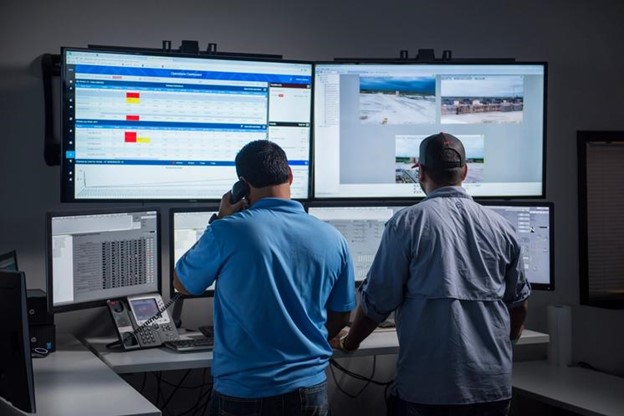
- Every year we proactively evaluate our locations for the installation of line heaters – mobile units designed to protect our natural gas systems against freezing – and start deploying these units to key sites in September before temperatures dip. We focus this equipment on our highest impact wells to maximize their impact in maintaining our production levels. We have approximately 125 units operational throughout the field.
- At our larger facilities, we have backup power generation to keep key equipment online during power interruptions.
- We proactively perform preventative maintenance on major equipment ahead of the winter months to help prevent facility malfunctions during cold weather events.
Additionally, when faced with forecasted significant winter events, our team initiates a weatherization action plan, which consists of:
- Reviewing our field staffing levels, schedules and securing local hotel space to ensure we have coverage and are able to keep our teams local to minimize travel while maintaining a focus on employee safety and improving response time.
- Proactively draining surface lines to remove accumulated water or condensate to prevent freezing or ice plugs.
- Proactively fueling generators and charging batteries for control systems and communications tools.
- Injecting methanol into the natural gas stream as temperatures drop. Methanol is commonly used to reduce freezing in oil and gas production and transportation operations. We have over 700 pumps installed at most of our locations that are capable of being used to inject methanol to minimize freezing issues.

As critical infrastructure providers, [company] takes very seriously our mandate to maintain an uninterrupted supply of much-needed affordable energy. Our powerful combination of skilled and dedicated teams, early preparation and the best digital technology allow us to deliver affordable, reliable and responsible energy no matter the weather conditions.
Frequently Asked Questions
- Reliable electricity
- Physical access to facilities (including roads) throughout the extreme weather event
- Telecommunications services
Many operators weatherize their equipment and facilities as standard operations. Even weatherized equipment requires power to operate safely and efficiently.
The Texas oil and natural gas community will continue working alongside regulators at the Public Utility Commission (PUC) and Railroad Commission (RRC) to achieve the goals set by the 87th Texas Legislature to ensure Texans never experience the cascade of events leading to the electric power losses faced this past February.
The 87th Legislature has passed mandatory weatherization requirements for equipment “critical” to producing electricity. Proper weatherization of essential infrastructure is appropriate and already being implemented. Because the natural gas supply chain is a complex and intricate operation, measures to improve its resiliency through proper weatherization means meticulously targeting only the infrastructure critical to supply electricity during an emergency situation.
Resources
Sources
Emergency Preparation
Local Providers
- Contacts for local providers can be found on ERCOT’s Electric Outage Links page.
Road Conditions and Closures
- To learn more about road conditions and closures visit Drive Texas.
- Roadside Assistance: 800-525-5555. Texas has an 800 # for roadside assistance and has deployed 3,000 national guard to assist in stranded vehicles.

